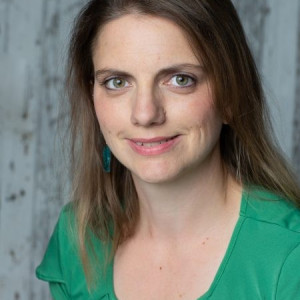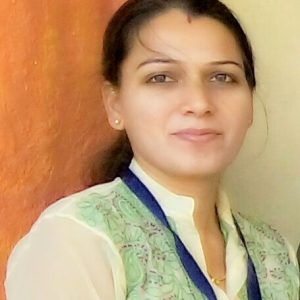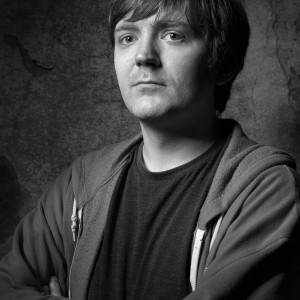What's your typical work routine?
Interview with Laurel about helping companies transition to remote work
Because I work with multiple clients, my routine is scheduled by week.
Weekday afternoons are blocked for one client, Tuesday and Friday mornings are reserved for another client, etc.
On a daily level, I start my workday around 7:30 catching up on email or doing some content writing at my treadmill desk. I'll take a break around 11:00 for a shower and early lunch, then resume working in my home office until I go pick up my kids from school at 3:00.
After that it's time to focus on my family and personal hobbies. I am a notorious workaholic, so it's important for me to maintain strict office hours to preserve work-life balance.
Laurel is an advocate for remote work and helps companies learn how to work remotely through her consulting and writing.
Read full interview from Interview with Laurel about helping companies transition to remote work.
Interview with Katerina, a team collaboration consultant who sees the value of discipline
My typical work routine depends. If I have to write, I normally block a couple of hours, the same goes for data analysis. All of my teachings are done in the evening.
Generally, I like to structure my day in 2 to 3 hours of work as I need time to focus on a task. At the same time I also need to switch tasks to stay sharp.
Katerina fell into remote work by accident - she reveals how easy and straightforward it can be to make discipline a daily part of remote work.
Read full interview from Interview with Katerina, a team collaboration consultant who sees the value of discipline.
Interview with Laura, a communications specialist and travel writer by night
While I live in the west, I work east coast hours. So, I log into work at 7 a.m. PST, Mondays through Fridays.
First, I greet my teammates, letting them know I am around. I then log into Help Scout to answer customer inquiries for website projects and coordinate those accordingly.
I spend my day multitasking. So while I'm working with customer inquiries, I'm also monitoring our social media for engagement there, as well as our blog for comments.
I like to tackle content first, so I work on editing, coordinating, and scheduling blog posts. If there are other content needs required, such as updating or creating content for a landing page or marketing collateral, I do that, too.
During the last hours of the day, I work on our social media. Peppered in between all of that are quick meetings and chats with teammates about content.
Laura Coronado discusses her method for juggling her career as a communications specialist by day and her side hustle as a freelance travel writer by night.
Read full interview from Interview with Laura, a communications specialist and travel writer by night.
Interview with Vaishali, a content marketer and a productivity tool expert
I start work at 9 am and finish by 6 pm.
I try to complete high priority tasks in the mornings when my daughter is at school. After that, I then work on the low priority ones in the afternoons.
That way I get some time with family.
For many, working from home often results in working 24/7.
However, I make sure I keep my laptop away on weekends so that I can start fresh every week.
Also, I take breaks in-between and an afternoon nap of approximately 20 minutes. Chatting with co-workers and team building activities also helps me stay motivated and focused.
Vaishali persevered until she found the right remote work job for her lifestyle—check out how she uses productivity tools and time management strategies to stay productive.
Read full interview from Interview with Vaishali, a content marketer and a productivity tool expert.
Interview with Dane, a freelance writer and author with 7 published books
This is actually something that I’m working on as I don’t really have one. I suffer from anxiety/depression and also have a lot of problems with sleeping, so I don’t really work a 9-5.
Instead, I typically break my work up by getting as much as I can get done during the day while my partner is at work and then I do a little more after she goes to bed.
I quite often end up working evenings/weekends, but the flip-side of that is that if I need to take a mental health day, I can just take it without needing to justify it to a boss.
I tend to find that work comes in waves as well, so I’m always either super busy (as I am at the moment) or I’m relatively free, in which case I can do a little less work and/or focus on all of the admin stuff.
But as a general rule, I work the same amount of hours as I used to work when I was in full-time employment, I just don’t necessarily do it at the same time.
As for my actual process, it’s all pretty simple: I sit down at the computer and write until I’ve finished whatever the deliverable is, and then I read back through it and make any edits that are needed. Then I send it to the client and invoice them before moving on to the next deliverable.
In a good day I can churn out 4-6,000 words. It really depends upon what I have on because some tasks take longer than others. For example, writing SEO copy takes longer because you have to take a lot of time to make sure that you’re using keywords etc.
Dane is a freelance writer and author who works remotely, and balances client work with writing his own books.
Read full interview from Interview with Dane, a freelance writer and author with 7 published books.
Interview with Patric, a UX designer and usability engineer that works from home
Typically I get up around 6am whenever my little one wakes me up ;-)
After some family-time and breakfast I take my son to the daycare and get back into the home-office which is a separate room in our home.
Mostly I try to focus on one topic each day.
For example one day could be freelance only, packed with calls and productive time to create wireframes where another day can be focussed on one of our side projects.
My wife is also working from home, so we have our lunch around noon and continue to work either on our own projects or together - depending on the daily focus.
In the afternoon we collect our little one and spent some family time. Most of the days we split our afternoons so my wife and I can each have one or two "working afternoons" and the other one takes care of our son meanwhile.
Most of the weekdays we put in another few hours of work after 8pm.
Patric works on his own projects while also consulting for medium sized software companies, learn how he works remotely.
Read full interview from Interview with Patric, a UX designer and usability engineer that works from home.
Interview with Melissa, a co-founder and remote work champion
My day starts with getting my kids up and out the door. I do my planning week by week, so I will have already decided where I need to work that day based on if we have video calls with clients and if I need some solid work time with Maryellen or not.
I have three go-to work locations I alternate between. After daycare drop off, I get coffee (always) and then get settled in my space and have a look at my to-do list.
I've been loving the 5-3-1 method. I pluck out one big thing, three medium things, and five little things that I want to do that day. It sort of becomes a game to get it done.
Then I give myself no more than 15 minutes to sort out any personal/home-related emails or calls that are urgent. From there, I usually work until my stomach growls. I will then decide on lunch or, if I was really on it that day, grab it from the fridge because I made it already! Then, I will take a break, walk around, drink some water, and get back to it.
My day ends at about 4:30 when I go to get the kids. Some days I log off earlier, some days later. Once a week, there will be a doctor's appointment or something for the kids, and I just build that into my calendar so clients can't book a time that overlaps. It all depends. But I have full control, and that's what I love!
I have gotten off my routine of exercise at least three times a week, so my latest challenge to myself is to incorporate that back in.
Melissa started Work Well Wherever to help individuals & companies embrace remote work—see how she balances entrepreneurship, parenthood, & self-care.
Read full interview from Interview with Melissa, a co-founder and remote work champion.
Interview with Vivek, an entrepreneur building a virtual office for remote teams
- 7 AM - Wake up and get dressed
- 7 AM to 7:30 AM - Meditate for 30 minutes
- 7:30 AM to 7:40 AM - Treat my bonsai tree
- 7:40 AM to 8:30 AM - Answer emails and customer messages on Intercom
- 8:30 AM to 9:00 AM - Open Pragli and chat with my cofounder about the engineering or marketing tasks for the day. Leave Pragli open to have easier audio/video conversations if we need them.
- 9:00 AM to 11:30 AM - Take any meetings for the day with customers, vendors, or partners. I schedule most of my meetings during this block to free time in the afternoon for deep work. Calendly is critical for ensuring that I only schedule meetings during this block.
- 11:30 AM to 12:15 PM - Lunchtime
- 12:15 PM to 4 PM - Execution time to develop engineering features, squash bugs, or work on marketing material
- 4 PM to 4:30 PM - Break time
- 4:30 PM to 6:30 PM - Creative time to design new product features in Figma or send outreach emails
- 6:30 PM to 7:30 PM - Dinner time
The long San Francisco commute sent Vivek into remote work—hear about his three strategies for eliminating distractions & his must-have tools.
Read full interview from Interview with Vivek, an entrepreneur building a virtual office for remote teams.
Interview with Alaina, a nonprofit program state director
I typically start my morning skimming our social media pages, and interacting and scheduling posts.
Some people find it easy to knock out the hardest tasks of the day in the morning, but most times I like to start with the easier tasks that can take an hour or less so that it doesn’t get lost in the shuffle of the day.
Next, I check my email, respond to any urgent matters, and follow-up with items. After those tasks, I start on my all-important to-do list.
I find that creating a to-do list the night before keeps my day and week organized.
After that, my days vary since some days I’m traveling to meet with clients or partners.
It takes a minute to find your rhythm in a new remote position—hear how Alaina organizes her time to hit the ground running in a new remote work job.
Read full interview from Interview with Alaina, a nonprofit program state director.
Interview with Michelle, an organizer of digital nomad experiences
I get up around 7 AM. The first thing I do is morning stretches. I then engage in meditation and finish the morning by eating oatmeal and honey, and banana for breakfast.
Around 9 AM my workday starts. I set daily goals and a to-do list in Trello. I then track my time in Toggl and attempt to finish my daily tasks.
A solo backpacking trip led to Michelle organizing co-travel experiences for digital nomads—hear how she manages working while traveling.
Read full interview from Interview with Michelle, an organizer of digital nomad experiences.









